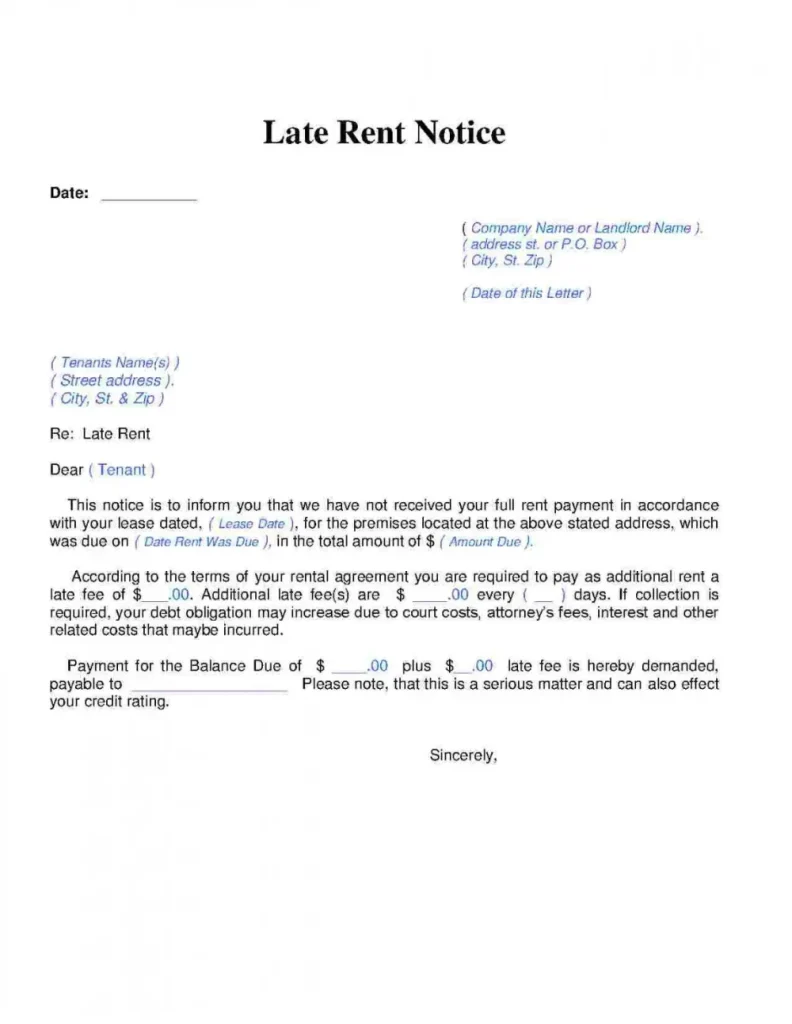Receiving an I-T notice for rent payments can be an unsettling experience for many taxpayers, particularly those who have recently made payments to relatives. As the tax department intensifies its scrutiny, understanding your obligations regarding rent payment tax notices is crucial. Proper documentation, such as a formal rent agreement, plays a vital role in defending against potential claims. Moreover, adhering to Tax Deducted at Source (TDS) regulations on rent payments is essential to avoid complications during I-T return filing. By ensuring transparent transactions and wisely managing House Rent Allowance (HRA) claims, taxpayers can navigate these tax intricacies with greater confidence.
When individuals face tax reminders concerning rental expenses, especially concerning payments made to family members, it often refers to the income tax (I-T) notices regarding rental payments. These notifications usually pertain to issues surrounding tax obligations linked with house rental payments, including matters related to house rent allowance (HRA) and TDS regulations. Establishing a formal lease agreement not only legitimizes the rental relationship but may also fortify claims during the income tax return filing process. Staying proactive about tax deductions is essential, especially in an era where clarity and compliance can significantly impact your financial standing. Addressing these challenges with informed strategies will help taxpayers safeguard their interests and streamline their financial obligations.
Understanding I-T Notices for Rent Payments
Receiving an I-T notice related to rent payments can be unsettling for many taxpayers, especially when the payments are made to relatives. Such notices often arise from failing to comply with the mandatory Tax Deducted at Source (TDS) regulations. When a taxpayer pays rent that exceeds Rs 2.4 lakh a year, they are required to deduct a 3% TDS before making the payment. This means that failure to adhere to this rule can flag your account for scrutiny by the tax authorities. It’s crucial to understand these requirements to prepare adequately if you receive a notice regarding your rent payments.
Many taxpayers are unaware that simply paying rent to a relative does not shield them from tax scrutiny. The Income Tax Department has tightened its regulations to ensure that proper documentation, such as a formal rent agreement, is in place. This can prove vital for your House Rent Allowance (HRA) claims. Engaging in formal agreements and maintaining proper transaction records can greatly help in defending your case against any I-T notices.
Importance of a Formal Rent Agreement
A formal rent agreement is more than just a document; it is a crucial piece of evidence in the eyes of the tax authorities. This agreement should clearly outline the terms of the rental arrangement, including the amount of rent, the payment schedule, and the duration of the lease. Having such documentation can help substantiate your claims if questioned by the tax department while filing your ITR. Taxpayers should therefore ensure that this agreement is well-drafted and legally binding.
Additionally, a formal rent agreement provides legitimacy to your HRA claims while offering a protective layer during tax audits. In cases where your rent is paid in cash, without corresponding documentation, you may find it difficult to defend your position. As per the guidelines of the tax department, it is advisable to enter into formal rent agreements, particularly when paying rent to relatives, which will not only fulfill legal obligations but also strengthen your claim for HRA exemption.
Making Rent Payments: Cash vs. Bank Transfers
It is strongly advised that rent payments be made through bank transfers rather than in cash. This not only provides a well-documented trail of transactions but also complies with the requirements of the Income Tax Department. When a taxpayer transfers rent directly into a relative’s bank account, it creates clear, traceable evidence of the payment, which can be crucial in the event of an I-T scrutiny. Cash transactions, on the other hand, lack documentation and can invite unnecessary trouble.
Opting for a bank transfer reduces the risks associated with tax notices significantly. When payments are conducted via bank transfers, it allows for the documentation needed to substantiate your claims against any received tax notices. Keeping proof of these transactions, such as bank statements, alongside the formal rent agreement enhances your position and provides the necessary back-up to ensure compliance with tax liabilities, including TDS on rent.
Navigating TDS Regulations on Rent Payments
Tax Deducted at Source (TDS) is an essential part of managing your tax liabilities when it comes to rent payments, particularly if the cumulative rent surpasses Rs 2.4 lakh in a financial year. As a renting party, it is your duty to deduct 3% TDS before transferring the rent to the landlord. This compliance not only assures the tax department that due taxes are being paid but also secures your rights as a tenant should any issues arise later.
TDS on rent payments requires you to file Form 26QC to maintain transparency and avoid the hustle of attention from the tax authorities. When you follow these TDS regulations, you are not only protecting yourself from potential fines and penalties related to tax evasion but are also positioning yourself favorably during I-T return filing, especially if you claim HRA exemptions.
Claiming HRA Under the Old Tax Regime
Understanding how to claim House Rent Allowance (HRA) benefits is vital when filing your tax returns, especially if you are under the old tax regime. Under the prevailing regulations, salaried individuals can enjoy exemptions on HRA, provided they can substantiate their rent payments with sufficient documentation, including a formal rent agreement and proof of TDS deducted. Notably, selecting the new tax regime means you won’t be able to claim HRA exemptions.
Taxpayers should meticulously prepare all pertinent documents before filing their ITR. Although the new tax regime offers reduced tax rates, it does not account for HRA exemptions. Therefore, for individuals relying on rental payments as a major living expense, making claims under the old regime can result in significant tax savings, provided you can demonstrate eligibility through proper records.
Utilizing Online HRA Calculators
Calculating your House Rent Allowance (HRA) entitlement can be simplified using online HRA calculators provided by the Income Tax Department. These tools streamline the complexity involved in determining the exempted and taxable portions of your HRA, allowing taxpayers to input their basic salary, dearness allowance, commission, and actual rent paid. By doing so, you gain insights into how much HRA you can claim against your overall income, making tax planning much more efficient.
Utilizing these calculators proficiently not only ensures that you maximize your HRA claims but also aids in effective compliance with the Income Tax policies. It’s a wise approach to familiarize yourself with the workings of these online tools, as they can significantly bolster your preparation while filing your ITR, especially if you are diligent about deducting TDS and upholding a formal rent agreement.
Stay Informed About Tax Regulations
Tax regulations are ever-evolving, and staying up-to-date with the latest guidelines is critical for taxpayers. Regularly checking official announcements from the Income Tax Department can provide early alerts on changes that could affect rent payments, TDS rates, and HRA claims. Being informed means that you can adapt to these changes promptly, ensuring that your tax affairs remain compliant and efficient.
Joining financial forums or subscribing to tax-related news can also prove advantageous. By engaging with experts and seeking advice on best practices, you can navigate the complexities of tax compliance more effectively. These resources can help you build knowledge about necessary documentation for claims and alert you to any potential pitfalls that may arise regarding tax notices for rent payments.
The Impact of Tax Notices on Taxpayers
Receiving a tax notice can be a source of anxiety for taxpayers, but understanding the implications and addressing them promptly is essential. Such notices may indicate that the tax department is scrutinizing your rent claims due to the absence of proper TDS deductions or lack of a formal rent agreement. Addressing these concerns early can significantly reduce long-term consequences or penalties.
To mitigate the impact of tax notices, assembly of comprehensive documentation is vital. Ensure you have all necessary papers, including proofs of rent payments, TDS compliance, and any correspondence with tax authorities. Taking these proactive measures not only builds a strong case for yourself but also aids in defending against unwarranted claims, hence reassuring that you are compliant with tax regulations related to rent.
Steps to Take If You Receive an I-T Notice
If you find yourself in the position of receiving an Income Tax notice regarding rent payments, it’s crucial to take immediate action. The first step is to carefully read the notice to understand which specific issues have been raised. Gathering required documents, such as your formal rent agreement and bank statements showing rent payments, is essential in establishing your compliance with tax rules and regulations.
Next, consider seeking professional help from a Chartered Accountant or tax consultant. Their expertise can guide you through your responses and help clarify any points raised in the notice. By collaborating with professionals in the field, you can ensure a comprehensively informed response that maximizes the chances of successfully addressing the issue at hand, including any discrepancies related to TDS and HRA claims.
Frequently Asked Questions
What is an I-T notice regarding rent payments?
An I-T notice for rent payments is a communication from the income tax department regarding discrepancies or requirements related to reported rent payments. This could pertain to House Rent Allowance (HRA) claims, missing Tax Deducted at Source (TDS) deductions, or the need for a formal rent agreement.
How can I respond to an I-T notice for rent payments to a relative?
To respond to an I-T notice for rent payments, first ensure you have a formal rent agreement and that rent payments are made via bank transfer, not in cash. Also, confirm that you have deducted the necessary 3% TDS as required when making rent payments.
Why do I need a formal rent agreement for HRA claims?
A formal rent agreement is crucial for HRA claims as it serves as legal proof of the rental arrangement and supports your claims against scrutiny during an I-T notice regarding rent payments.
What should I do if I didn’t deduct TDS on my rent payments?
If you failed to deduct TDS on your rent payments, you should pay the overdue TDS as soon as possible to avoid penalties. It may also be necessary to show evidence of both the rent agreement and the payment method to address any I-T notice related to this issue.
Can I claim HRA under the new tax regime?
No, under the new tax regime, you cannot claim HRA exemptions. To benefit from HRA, you must opt for the old tax regime while filing your I-T return.
How is TDS on rent calculated and when should it be deducted?
TDS on rent is calculated at 3% of the monthly rent paid when the total exceeds ₹2,40,000 in a financial year. It should be deducted at the time of payment. Ensure timely deduction to avoid complications with I-T notices.
What records should I maintain for I-T notices related to rent payments?
For I-T notices related to rent payments, maintain copies of your formal rent agreement, bank statements showing rent transactions, and proof of TDS deduction. These documents substantiate your claims and compliance.
What to do if I receive an I-T notice for unpaid TDS on rent?
If you receive an I-T notice for unpaid TDS on rent, review your records to confirm any payments. Rectify the situation by paying the outstanding TDS as needed and responding to the notice with the necessary documentation.
How does the I-T department use information about rent payments?
The I-T department uses information about rent payments to verify compliance with tax regulations and to analyze if taxpayers are appropriately deducting TDS and claiming HRA as per thelaw.
Where can I find an HRA calculator for my I-T return?
The I-T department provides an online HRA calculator on their official website. You can input your salary details, HRA received, and rent paid to calculate the exempt and taxable portions of your HRA.
| Key Point | Details |
|---|---|
| Formal Rent Agreement | Legally binding document to substantiate rental claims. |
| Bank Transfer for Rent | Ensure rent payments are made via bank transfer, not cash, for traceability. |
| TDS Deduction | Deduct 3% TDS while transferring rent to avoid tax notices. |
| Old Tax Regime Necessary for HRA | To claim HRA exemption, taxpayers must file under the old tax regime. |
| HRA Calculation Tool | Use the online HRA calculator to determine exempted and taxable HRA. |
Summary
I-T notice for rent payments can cause confusion among taxpayers, especially when payments are made to relatives. It is essential to adhere to the outlined steps, including signing a formal rent agreement, ensuring payment is made through bank transfers, and properly deducting TDS. Remember that for claiming HRA exemptions, one must opt for the old tax regime, as the new tax system does not permit HRA claims. By following these best practices, taxpayers can defend their claims and navigate the complexities associated with the I-T notice for rent payments.




